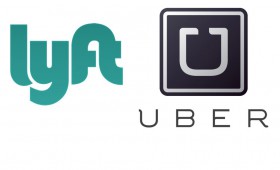Thinking of getting a “Lyft” from a ridesharing service? Make sure you’re covered if you get hurt as a passenger.
Ridesharing is becoming more common around the state and the nation, particularly in large cities. Capitalizing on the new “sharing economy” and to a certain extent the coolness factor, this simple concept is thriving. Passengers, however, are generally not aware of the insurance implications, and that their driver’s insurance may not properly cover them. If you’re thinking of becoming a driver for a Transportation Network Company (TNC), also read our companion flyer.
Q: What is ridesharing?
A: In the new sharing economy, ridesharing allows vehicle owners to transport passengers in their own cars for a fee or a “donation.”
- Drivers sign up with a service that charges a fee to connect passengers with drivers via a website or smartphone app.
- Passengers arrange rides and pay with a credit card using the app.
Q: Why is ridesharing an issue?
A: Ridesharing is not the same as riding in a taxi or limousine. Taxis are licensed by the state or a local authority and subject to strict standards, from vehicle inspection and driver licensing to insurance that protects passengers and others who could be hurt in an accident.
Transportation Network Companies (TNCs) such as Uber or Lyft are not subject to the same requirements. However, they have drawn increasing attention from state regulators and legislators concerned that the public may not be properly protected. In fact, various state regulators have issued consumer alerts to warn the public about possible risks of using a ridesharing app when riding as a passenger.
Q: How is the ridesharing company insured?
A: Insurance is the crux of the issue. Drivers are using their personal vehicles. Personal auto insurance generally excludes coverage when transporting passengers for a fee.
An increasing number of TNCs are indicating that they are going to provide some protection by covering the driver’s commercial exposure for liability and collision coverage. The nature and scope of coverage provided by the TNC varies from company to company, and its coordination with the driver’s personal auto policy can leave uninsured gaps, in some cases significant.
Q: How do I know if I’m covered as a passenger?
A: If you are considering using a ridesharing service, you should:
- Research the companies that operate in your city
- Find out how these companies protect their drivers and passengers, including their liability limits
If you have a personal auto policy yourself, you may be able to claim some coverage under your policy if you are hurt in an accident as a passenger. If you do not own a car, you will not have that option, unless you purchased a “named non-owner” policy. We can tell you more about this if you’d like.
Q: Why should I worry? How likely is it that a bad claim will occur?
A: There is no way of knowing what kind of accident will occur. Hopefully, none. However, many of the insurance issues that have come to light have stemmed from catastrophic claims. One in California where a six-year old girl was killed in a collision with a rideshare car.
While often downplayed by those who have an interest in the ridesharing business, coordination between the commercial and personal auto policies can pose challenges. The timing and circumstances of any accident will have a bearing on whether coverage extends to the driver and the passenger. At this time, coverage gaps still exist in a number of circumstances.
Q: Is this insurance issue settled?
A: No. A number of state legislatures have passed laws to address proper insurance coverage (amongst other things), but the issue is not fully settled. Some personal auto insurers are revisiting the issue and considering new ways to close those gaps in insurance.
Download the Printable Flyer Now – Click Here
Recent Posts
How to Identify and Help Remove an Ice Dam
Sometimes, even your best efforts to prevent an...How to Help Prepare Your Boat for Spring
Are you one of the millions of boaters with spr...Space Heater Safety Tips
In order to save money in the colder months, ma...Umbrella Insurance Coverage
Umbrella insurance provides extra liability cov...5 Tips to Protect Your Possessions with Valuable Items Insurance Coverage
You may think that a homeowners insurance polic...

